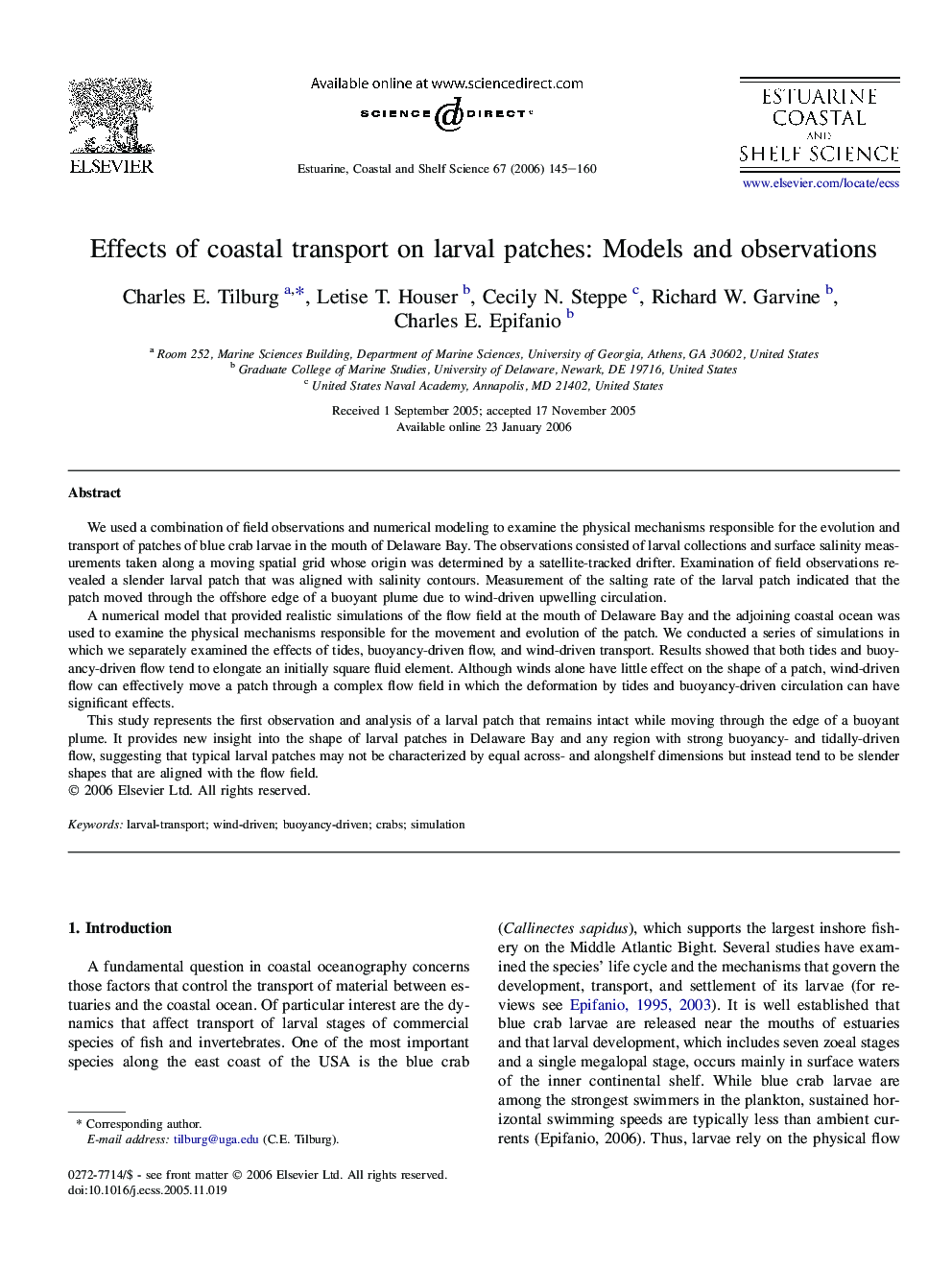| Article ID | Journal | Published Year | Pages | File Type |
|---|---|---|---|---|
| 4542326 | Estuarine, Coastal and Shelf Science | 2006 | 16 Pages |
We used a combination of field observations and numerical modeling to examine the physical mechanisms responsible for the evolution and transport of patches of blue crab larvae in the mouth of Delaware Bay. The observations consisted of larval collections and surface salinity measurements taken along a moving spatial grid whose origin was determined by a satellite-tracked drifter. Examination of field observations revealed a slender larval patch that was aligned with salinity contours. Measurement of the salting rate of the larval patch indicated that the patch moved through the offshore edge of a buoyant plume due to wind-driven upwelling circulation.A numerical model that provided realistic simulations of the flow field at the mouth of Delaware Bay and the adjoining coastal ocean was used to examine the physical mechanisms responsible for the movement and evolution of the patch. We conducted a series of simulations in which we separately examined the effects of tides, buoyancy-driven flow, and wind-driven transport. Results showed that both tides and buoyancy-driven flow tend to elongate an initially square fluid element. Although winds alone have little effect on the shape of a patch, wind-driven flow can effectively move a patch through a complex flow field in which the deformation by tides and buoyancy-driven circulation can have significant effects.This study represents the first observation and analysis of a larval patch that remains intact while moving through the edge of a buoyant plume. It provides new insight into the shape of larval patches in Delaware Bay and any region with strong buoyancy- and tidally-driven flow, suggesting that typical larval patches may not be characterized by equal across- and alongshelf dimensions but instead tend to be slender shapes that are aligned with the flow field.
